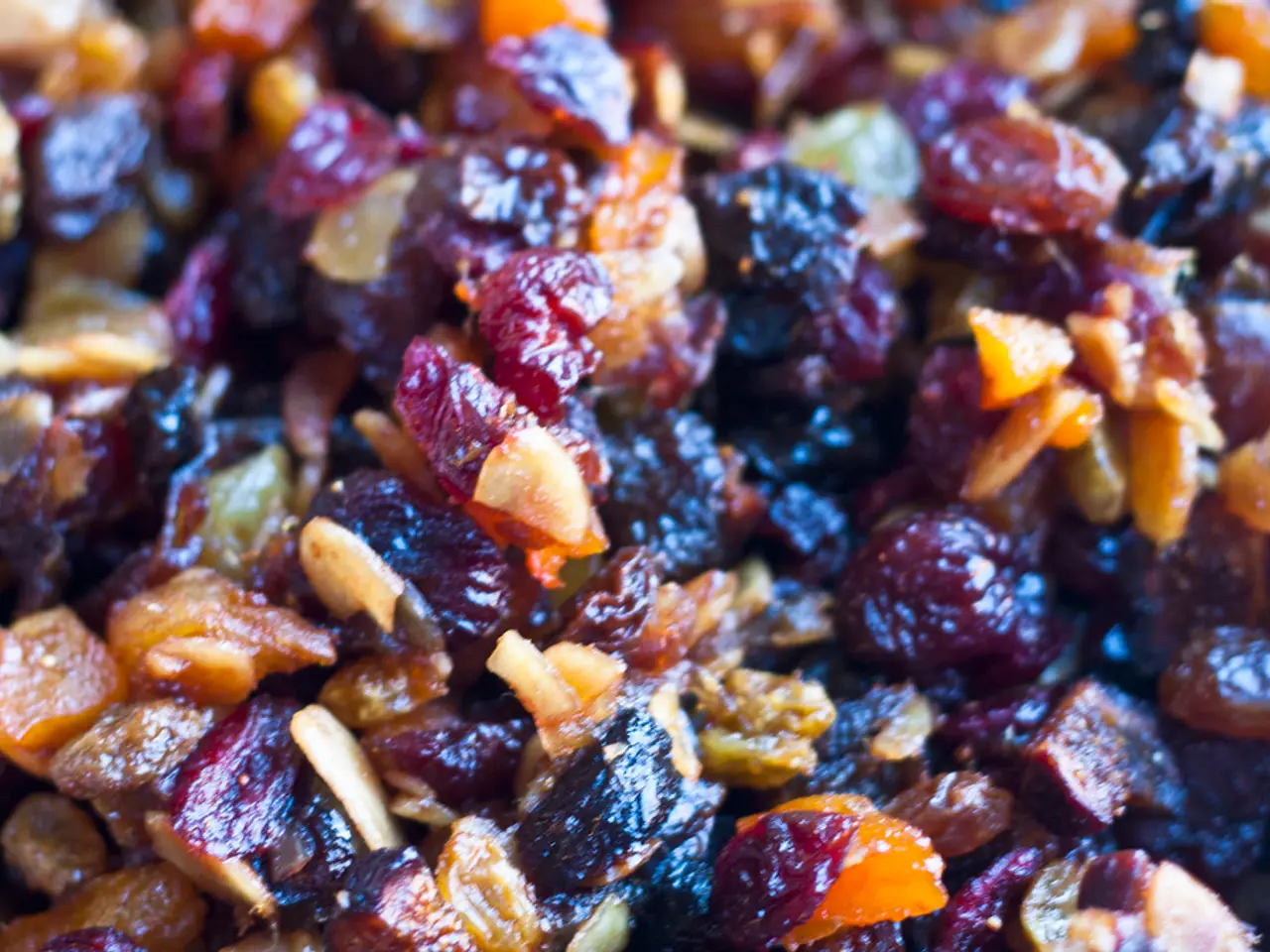"Does 'fibermaxxing' offer health benefits? Indeed, it does"
A growing trend on social media platforms like TikTok, under the hashtag #FiberMaxxing, is promoting the benefits of a diet rich in fiber-rich foods. This movement encourages individuals to meet or exceed daily fiber intake recommendations for better health.
According to the Dietary Guidelines for Americans 2020–2025, the recommended daily fiber intake amounts are 25g for women and 38g for men under 51, and 21g for women and 30g for men aged 51 and older [1]. These guidelines align with general advice that adults need about 22 to 34 grams of fiber daily, depending on age and gender [2].
Fiber plays a crucial role in maintaining digestive health, regulating blood glucose and lipid levels, and reducing risks of obesity and related chronic diseases [1]. However, most Americans consume significantly less fiber than recommended, often around 15-17 grams per day [3][4].
The Benefits of Fiber
Fiber helps improve survival rates for people with colon cancer [5]. It does this by fermenting in the gut to create short-chain fatty acids, such as butyrate, which can nourish critical cells in the colon and inhibit cancer cells and inflammation [6].
Fiber also aids in blood sugar regulation, slowing digestion and absorption of sugar into the bloodstream, reducing blood sugar spikes after meals [7]. Additionally, fiber can help "detoxify" the body by promoting regular bowel movements [8].
Fiber can also help prevent or manage constipation-induced issues such as hemorrhoids and pelvic floor problems [9]. Some fibrous foods, such as leafy vegetables and nuts, support liver health, which plays an important role in detoxification [10].
The Types of Fiber
There are two types of dietary fiber: soluble and insoluble. A balance of both is key for overall health [11]. Foods richer in soluble fiber include apples, bananas, citrus fruits, barley, carrots, oats, beans, and psyllium. Those with mostly insoluble fiber include vegetables such as green beans, cauliflower, and potatoes; whole-wheat flour or wheat bran; nuts; and beans [12].
FiberRich Foods
TikTok user "impamibaby" is promoting a diet rich in fiber-rich foods, such as chia seeds, goji berries, strawberries, raspberries, and various vegetables [6]. Eating a variety of whole or minimally processed foods will give you enough of what you need in terms of fiber [13].
Fiber Supplements
Fiber supplements can be helpful for addressing medical problems that need to be addressed more aggressively, but they shouldn't replace fibrous foods as they offer essential nutrients, minerals, and vitamins [14].
The Connections Between Gut Health and Mental Health
Experts are learning more about the connections between gut health and mental health, finding that diets high or low in fiber-rich foods affect mood [15].
In summary, increasing fiber intake can have numerous health benefits, from improving survival rates for people with colon cancer to reducing the risk of chronic illnesses and health conditions. It's important to start #FiberMaxxing gradually and to consult with a healthcare professional to determine the best fiber intake plan for individual needs.
For those looking for expert-backed eating lifestyles that boost health for life, signing up for CNN's Eat, But Better: Mediterranean Style could be a good option [16].
[1] https://www.dietaryguidelines.gov/ [2] https://www.health.harvard.edu/staying-healthy/the-importance-of-fiber [3] https://www.heart.org/ [4] https://www.cdc.gov/nutrition/datasystem/index.html [5] https://www.ncbi.nlm.nih.gov/pmc/articles/PMC6479100/ [6] https://www.tiktok.com/@impamibaby [7] https://www.ncbi.nlm.nih.gov/pmc/articles/PMC6612888/ [8] https://www.ncbi.nlm.nih.gov/pmc/articles/PMC6612888/ [9] https://www.ncbi.nlm.nih.gov/pmc/articles/PMC6612888/ [10] https://www.ncbi.nlm.nih.gov/pmc/articles/PMC6612888/ [11] https://www.ncbi.nlm.nih.gov/pmc/articles/PMC6612888/ [12] https://www.ncbi.nlm.nih.gov/pmc/articles/PMC6612888/ [13] https://www.hsph.harvard.edu/nutritionsource/carbohydrates/fiber/ [14] https://www.ncbi.nlm.nih.gov/pmc/articles/PMC6612888/ [15] https://www.ncbi.nlm.nih.gov/pmc/articles/PMC6612888/ [16] https://edition.cnn.com/eat-better/index.html
A balanced diet rich in fiber-rich foods, as depicted by TikTok user "impamibaby," can contribute significantly to health-and-wellness, including improving digestive health, regulating blood sugar levels, and reducing risks of obesity and related chronic diseases. Science underscores the importance of meeting daily fiber intake recommendations for fiber-rich foods like chia seeds, goji berries, strawberries, raspberries, and various vegetables, as part of a broad diet for fitness-and-exercise and overall nutrition.




